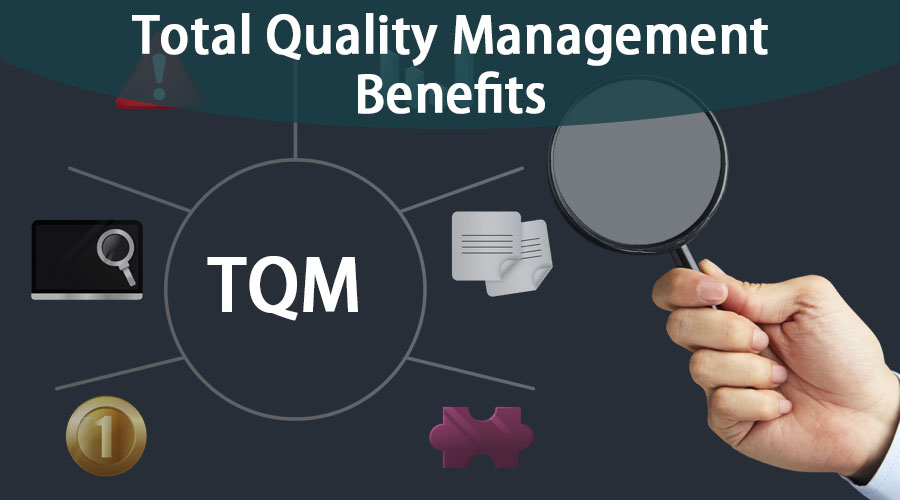
Because Japan lacked abundant natural resources, Japanese leaders viewed the exportation of goods worldwide as their main path to financial success. Their post-war reputation for low-quality products posed a particular challenge to this goal. Japanese products were gradually recognized for usability and durability. In 1960, for his efforts on behalf of Japanese industry, Deming received the Second Order Medal of the Sacred Treasure from the Emperor of Japan.
How to measure the success of TQM initiatives?
Such a step requires the use of formal policies, systems, and structures as well as flexible, re-assessable implementation plans. The Voice of the Customer is often a contributing factor in defining your goals. A vaguely expressed goal such as “The product must perform better than the competition” is not clear or measurable. Do your homework, benchmark your competitors and document the performance of their product or service. In some cases you may want to implement Statistical Process Control (SPC) to record the appropriate data and monitor the process.
Guide: Total Quality Management (TQM)
- ” In the program, Deming emphasized that, “If you get gains in productivity, it is only because people work smarter, not harder.
- This strategy focuses on using the criteria of a reputable TQM quality award to identify areas of improvement.
- Like TQM, Kaizen approaches efforts from the perspective that the whole company is responsible for quality and that improvement must be continuous.
- As with most quality management systems and methodologies the success of deployment is highly dependent upon how TQM is introduced to a business and the culture and appetite for change management.
First and foremost, companies need to provide clarity around their objectives. Secondly, they need to provide the training and resources employees need to do their work efficiently and effectively. Finally, a high degree of psychological safety means employees have the freedom to push themselves — without the fear of repercussions for failure. But, as a leader or a project manager, you feel like a lot of it rests on your shoulders. Up to this point, it’s been your responsibility to review everything carefully and make sure your company’s outputs meet your quality standards.
Focus on Process

One of the basic beliefs of TQM is that mistakes will occur if not prevented and the majority of them are due to inadequate controls or systems. Mistake Proofing or Poke Yoke methodology can be implemented into any step within a process where errors occur. Eliminate the need for inspection to achieve quality by preventing errors and building quality into the product in the first place. When implementing TQM you should review the processes to identify opportunities for improvement.
It includes the 5 Ss, seiri, seiton, seiso, Seiketsu, and shitsuke, translated loosely into English as sort, set in order, shine, standardize, and sustain. Kaizen is considered more of a philosophy for how to organize your workspace and the larger workplace and how to have the right attitude best invoice management software to streamline ap process toward your work and coworkers. Kaizen events are improvement efforts that involve small teams that spend a short time, usually about a week, considering and testing improvements. Management periodically reviews the solutions to make sure that they continue to benefit the team.
To implement TQM, organizations should establish a dedicated TQM team that is responsible for developing and implementing quality management processes. This team should set clear and measurable goals for the organization to achieve. TQM encourages organizations to continuously monitor and improve their processes and systems. By encouraging experimentation and testing new ideas, TQM can help organizations to identify new and better ways of doing things, which can lead to increased flexibility and adaptability. Continuous improvement should be a primary objective for every member of the workforce to adopt the principles of gradual improvement and breakthrough improvement.
Additionally, TQM often involves cross-functional teams, which can help to break down silos and improve communication and collaboration across different departments and functions. Additionally, TQM can increase profitability by improving customer satisfaction. By involving customers in the quality improvement process, TQM helps organizations to understand and meet customer needs, which can lead to increased customer loyalty and repeat business.
Organizations are typically structured into departments which are managed by a responsible leader. Most departmental heads never interact with the customer, only internal stakeholders and other department leaders. But 50 years on, the TQM philosophy still holds some interesting concepts and principles to apply in modern sectors like life science. To develop TQM, organizations can use the above model along with the strategies listed below. Faced with stiff competition in the 1980s, American businesses began to realize the potential of TQM which led to its widespread adoption by the West. Quality control methods evolved in subsequent decades, with industrial engineer Joseph Juran first employing Shewhart’s methods and, later, in 1951, publishing his influential book, Juran’s Quality Control Handbook.
One of the key principles of TQM is customer-centricity, which means that the organization focuses on understanding and meeting the needs and expectations of its customers. TQM helps organizations to identify customer needs through various means such as customer feedback, surveys, and market research, and then use that information to improve products and services. Total Quality Management is a dynamic, evolving approach that integrates quality into every aspect of an organization. By focusing on continuous improvement, customer satisfaction, and involving all employees in the quality process, TQM helps organizations achieve long-term success and remain competitive. Total Quality Management is much more than a set of techniques or procedures; it’s a holistic approach that infuses quality into every aspect of an organization’s operations and culture.
By identifying and eliminating waste, such as excess inventory, long lead times, or unnecessary steps in a process, TQM can help to improve efficiency and productivity, which can lead to cost savings. TQM emphasizes the importance of employee involvement and empowerment by encouraging the participation of employees at all levels in the quality improvement process. This can include involving employees in problem-solving and decision-making, as well as giving them the authority to make changes to improve processes and systems. By involving employees in the quality improvement process, TQM helps to create a sense of ownership and commitment among employees, which can lead to increased engagement and motivation. TQM also emphasizes the importance of employee involvement and empowerment. By involving employees in the quality improvement process, TQM helps to create a culture of quality within the organization.
